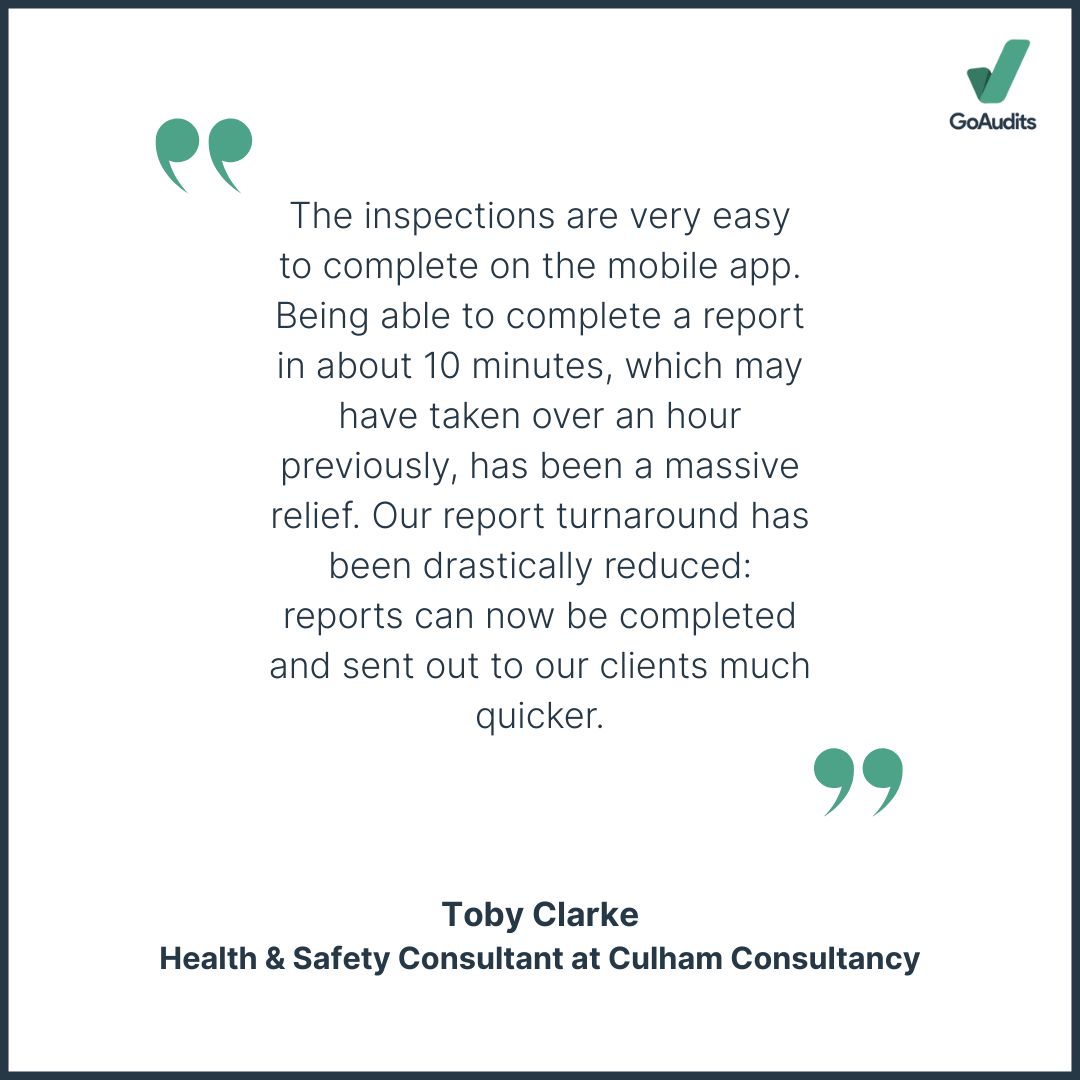Neglecting the maintenance and regular inspection of fire alarm systems can lead to dire consequences, including increased risks to life, property, and legal standing. A malfunctioning or untested fire alarm may fail to detect fires promptly, delaying emergency responses and exacerbating damage. Moreover, poorly maintained fire alarms can result in frequent false alarms. Failure to comply with fire safety regulations due to inadequate alarm maintenance can expose businesses to legal liabilities and insurance complications. That’s why regular fire alarm checks are not only essential to meet regulatory obligations but also for safeguarding lives and assets. Fire alarm safety checks identify and rectify issues such as faulty wiring, depleted batteries, or sensor malfunctions, ensuring the system’s reliability when needed most.
This article will explore the NFPA 72 testing requirements, elements and the steps of fire alarm system checks, how often they should be performed, and why.
- Understanding Fire Alarm Checks
- NFPA 72 Fire Alarm Testing Requirements
- What Does a Fire Alarm Check Involve?
- Conduct Effective Fire Alarm Safety Checks with GoAudits
- Free & Customizable Fire Safety & Inspection Checklists
- How Often Should Fire Alarm Checks Be Done?
- What are the Benefits of Regular Fire Alarm Checks?
- Tips for Maintaining an Effective Fire Alarm System
Understanding Fire Alarm Checks
Fire alarm checks, also known as fire alarm inspections or testing, are comprehensive evaluations of a fire alarm system to ensure it is fully operational and compliant with safety regulations.
The three main types of fire alarms are:
1. Conventional fire alarm systems: It divides the building into zones, with detectors wired in zones to the control panel. When an alarm triggers, the panel indicates only the zone, not the exact device location. They are cost-effective and simpler and are suitable for smaller buildings.
2. Addressable fire alarm systems: Each device (smoke detector, manual call point, etc.) has a unique address and the control panel pinpoints the exact device and location of the alarm. Supporting advanced features like event logs, pre-alarms, and programmable thresholds, they are more suitable for large or complex buildings. However, they are costly and complex to install.
3. Wireless fire alarm systems: They use radio frequencies to communicate between devices and the control panel, eliminating the need for extensive wiring. They are cheaper and easy to install, offering greater flexibility for relocation or maintenance.
Common Issues Identified During Fire Alarm Safety Checks
Regular fire alarm safety checks can help you identify the following issues and defects.
- Alarm Sounder Problems: Issues such as obstructed sounders, aging equipment, or electrical problems can result in low or silent alarms, compromising safety.
- False Alarms: They can cause unnecessary panic and may lead to occupants ignoring genuine alarms. Common causes include environmental factors like dust, humidity, temperature fluctuations, and power surges.
- Battery Failures: Depleted or improperly maintained batteries can lead to system failures during power outages. Regular inspection and timely replacement of batteries are necessary to maintain system reliability.
- Wiring Issues: Faulty or degraded wiring can disrupt communication between fire alarm components, leading to system malfunctions. Over time, wiring connections may become loose or damaged due to environmental factors.
- Device Malfunctions: Individual components like smoke detectors and pull stations may malfunction due to sensor contamination, component failure, or improper installation.
- Inaccessible Equipment: Fire alarm equipment must be readily accessible for inspection and maintenance. Obstructed or locked components can hinder evaluations and delay emergency responses.
- Aging Equipment: Over time, fire alarm components may deteriorate, leading to decreased performance or non-compliance with current standards.
- Control Panel Errors: The fire alarm control panel is the system’s central hub. Errors such as programming mistakes, wiring faults, or hardware failures can compromise the entire system.
- Environmental Factors: Environmental conditions like dust, humidity, and temperature fluctuations can affect fire alarm system performance. For instance, dust accumulation can trigger false alarms or hinder detector sensitivity.
NFPA 72 Fire Alarm Testing Requirements
In the US, adhering to NFPA 72, the National Fire Alarm and Signaling Code, is essential for ensuring the reliability of fire alarm systems, as well as to ensure legal compliance. It outlines comprehensive requirements for inspection, testing, maintenance, and documentation.
Fire Alarm Checks & Inspection Frequency
NFPA 72 mandates specific intervals for inspecting and testing fire alarm components to maintain system integrity. In addition to regular, weekly, monthly, semi-annual, and annual fire alarm safety checks, NFPA 72 inspection requirements also mandate the following intervals:
- Every 2 Years: Sensitivity testing of smoke detectors, unless the system provides continuous sensitivity monitoring.
- Every 5 to 10 Years: Testing of specific components as recommended by the manufacturer or as required by the authority having jurisdiction (AHJ).
Fire Alarm Inspection Procedures
Inspection procedures involve visual inspections, functional tests, and sensitivity testing. Adhering to these procedures helps maintain system readiness and occupant safety.
Reacceptance Testing
Reacceptance testing is required when system components are added, deleted, or modified. It’s also used when software changes are made to the system and repairs or adjustments affect system performance. Reacceptance testing ensures that modifications have not compromised system functionality and that the system continues to meet NFPA fire alarm testing requirements.
Who Should Perform Fire Alarm Checks
Fire alarm inspections and testing should be conducted by individuals who are:
- Trained and knowledgeable about fire alarm systems and NFPA 72 standards.
- Recognized by the AHJ or certified by relevant authorities.
While facility staff may perform basic alarm inspections, comprehensive fire alarm checks, testing, and maintenance should be handled by certified professionals to ensure compliance and system reliability.
Documentation and Recordkeeping
Proper documentation is essential for demonstrating compliance and facilitating maintenance, including inspection and testing records, system documentation, and record storage.
What Does a Fire Alarm Check Involve?
A comprehensive fire alarm check involves several key steps, each designed to verify that all components of the fire alarm system are functioning correctly and meet regulatory standards.
Visual Inspection
Begin with a thorough visual examination of all fire alarm components. Check for signs of damage, wear, or tampering on devices such as smoke detectors, heat sensors, manual pull stations, and control panels. Ensure that these devices are clean and free from dust or debris, which can impair functionality. Verify that all equipment is securely mounted and unobstructed.
👉 Find out how GoAudits fire alarm inspection software can help you perform comprehensive fire alarm safety checks quickly and easily.
Functional Testing
It involves activating each component to confirm proper operation. This includes triggering smoke detectors with test smoke, activating manual pull stations, and verifying that alarms and strobes function as intended. Ensure that signals are correctly transmitted to the control panel and any connected monitoring services.
Control Panel Evaluation
Assess the fire alarm control panel (FACP), check for any error messages, verify that all indicators and displays are operational, and confirm that the panel communicates effectively with all connected devices. Review the panel’s event log for any irregularities or past issues.
Device Testing
Individually test each initiating device, including smoke detectors, heat detectors, and manual pull stations, to ensure they respond appropriately to activation. Also, test notification appliances to confirm they activate as expected during an alarm condition.
Battery Checks
Inspect and test the system’s backup batteries to ensure they can supply power during an outage. Check for signs of corrosion, verify voltage levels, and replace batteries that do not meet manufacturer specifications or show signs of degradation.
System Integrations
Examine the integration of the fire alarm system with other building systems, such as HVAC controls, elevator recall functions, and fire suppression systems. Ensure that activation of the fire alarm triggers the appropriate responses in these interconnected systems.
Documentation
Maintain detailed records of all inspections, tests, and maintenance activities. This documentation should include dates, findings, corrective actions taken, and the names of personnel involved. Proper record-keeping is essential for compliance with safety regulations and for tracking the system’s performance over time.
Conduct Effective Fire Alarm Safety Checks with GoAudits
Fire alarm safety checks must be thorough, efficient, and documented with precision to avoid any oversight. GoAudits offers intuitive and effective safety inspection software to help auditors conduct comprehensive fire alarm safety checks. GoAudits streamlined the process and ensured accuracy, accountability, ease of use, real-time visibility, and consistent, error-free results.
- Use simple checklist templates to perform fire alarm checks up to 5 times faster, even without an internet connection.
- Start with pre-made health and safety audit checklists or design your own using a drag-and-drop builder. You can also send your existing checklists and we’ll digitize them for you for free.
- Attach annotated photos directly from your device, adding clear visual evidence to each fire alarm check.
- Instantly generate professional fire safety reports with timestamps, user details, geolocation, and automated scoring. Customize them to fit your brand and share them with relevant stakeholders.
- Access up-to-date audit results, track recurring issues, and identify trends across all locations to inform preventive strategies.
- Assign corrective actions during the inspection. Track their status, send reminders, and ensure nothing falls through the cracks.
- Set up custom workflows for task approvals and escalations. Automatically notify the right stakeholders to accelerate resolution.
- View inspection statuses, action completion, and performance metrics in one place. Dive into specific audits or issues for detailed analysis.
GoAudits transformed Culham Consultancy’s auditing process by eliminating manual documentation and streamlining inspections across multiple client sites.
👉 By digitizing audits and automating report generation, Culham Consultancy reduced reporting time from over an hour to just 10 minutes per inspection.
This enabled quicker client communication and significantly improved data accuracy. Customizable checklists ensured audit consistency and relevance across varied industries. Annotated photos, color-coded answers, and dashboards made audit findings clearer and actionable. With responsive support and a system tailored to their workflows, Culham Consultancy now conducts faster, more reliable audits, ensuring operational efficiency and compliance.

Free & Customizable Fire Safety & Inspection Checklists
GoAudits fire inspection software offers a wide range of fire safety audit checklists. You can sign up for free, customize these checklists, and start using them. Alternatively, you can convert your fire SOPs into easily accessible, digital checklists.
- Property Fire Risk Assessment
- Fire Sprinkler System Inspection Checklist
- Fire Protection Equipment Checklist
- Fire Door Inspection Checklist
- Fire Risk Assessment Checklist
- Fire Pump Inspection Checklist
- NFPA 25 Fire Pump Inspection Checklist
- OSHA Fire Protection Checklist
- Fire Extinguisher Checklist
- Fire Damper Inspection Checklist
How Often Should Fire Alarm Checks Be Done?
Below is a structured schedule outlining the recommended intervals and actions:
Fire Alarm Weekly Testing
Visually inspect control panels, fuses, power supplies, and interface devices to ensure they are operational. Test batteries and engine-driven generators in public fire alarm reporting systems to confirm functionality.
Monthly Fire Alarm Checks
Examine batteries for signs of corrosion, leakage, or damage. Activate smoke detectors, heat detectors, and manual call points to verify proper signaling and audibility. Check the digital alarm communicator receiver (DACR) for proper operation.
Quarterly Fire Alarm Safety Checks
Inspect devices that monitor the status of fire protection systems to ensure they function correctly. Examine waterflow detectors to confirm they accurately detect water movement in sprinkler systems. If applicable, inspect radiant energy fire detectors to ensure they are operational.
Semiannual Fire Alarm Inspections
Conduct detailed visual and functional tests of all fire alarm components, including batteries, duct detectors, and smoke detectors, to ensure the entire system operates effectively.
Annual Fire Alarm Inspections
Comprehensive inspection and functional testing of the entire system, including control panels, detectors, notification devices, voice evacuation equipment, and communication with monitoring centers. Test the sensitivity of smoke detectors to confirm they respond appropriately to smoke levels. Verify that backup power sources, such as batteries and generators, can maintain system operation during a power outage. Annual fire alarm testing must be performed by certified professionals and documented for compliance with NFPA 72 and local regulations.
| Frequency | Typical Tasks |
| Weekly | Visual inspection of control panel LEDs, power supply, and one manual call point test |
| Monthly | Inspect batteries, control panel, wiring, and test some alarm components |
| Quarterly | Test smoke detectors, pull stations, supervisory devices, and communication pathways |
| Semi-Annually | Detailed inspection including backup power, alarm signals, duct detectors, and flow switches |
| Annually | Comprehensive functional testing of entire system, including control panel, detectors, alarms, and communication with monitoring services |
What are the Benefits of Regular Fire Alarm Checks?
Here’s why you should prioritize routine fire alarm inspections:
- Regular fire alarm checks confirm that all components are operational. It helps identify and rectify issues like battery degradation, wiring faults, or sensor obstructions before they compromise the system’s effectiveness.
- Routine maintenance reduces the likelihood of false alarms, preventing unnecessary disruptions. False alarms can be caused by dust accumulation, sensor malfunctions, or environmental factors.
- A well-maintained fire alarm system provides early detection, allowing employees to evacuate promptly and emergency services to respond quickly. This early intervention is crucial in safeguarding lives and minimizing property damage.
- By identifying and addressing potential issues during scheduled fire alarm safety checks, you can prevent unexpected system failures that might disrupt business operations. It ensures continuity and minimizes downtime.
- Regular maintenance helps detect minor issues before they escalate into major problems requiring expensive repairs or replacements. Additionally, avoiding false alarms can save costs associated with emergency response fees and operational disruptions.
- Adhering to fire safety regulations, such as NFPA 72 and BS 5839, not only avoids legal penalties but also demonstrates a commitment to safety standards.
Tips for Maintaining an Effective Fire Alarm System
Here are some tips to maintain effective fire alarm systems.
Perform Regular Checks and Inspections
Conduct monthly visual inspections to identify any signs of damage, obstruction, or tampering. Ensure that all detectors, alarms, and control panels are accessible and free from dust or debris. Schedule comprehensive annual fire alarm inspections by certified professionals to test the functionality of all components, including smoke detectors, heat sensors, and notification devices.
👉 In addition to fire alarm systems, you must also ensure the proper functioning of fire doors and extinguishers to strengthen your overall fire safety system. You can try GoAudits fire door inspection software and fire extinguisher inspection software to perform quick and effective fire door inspections and fire extinguisher inspections.
Address Fault Alerts Immediately
Respond promptly to any fault alerts or trouble signals indicated by the fire alarm control panel. Delays in addressing these alerts can compromise the system’s effectiveness and may lead to non-compliance with safety regulations. Regularly reviewing and clearing fault logs ensures the system remains in optimal working condition.
Keep Sensors Clean
Dust and debris can impair the sensitivity of smoke and heat detectors, leading to false alarms or failure to detect actual fires. Implement a routine cleaning schedule using appropriate tools and methods recommended by the manufacturer to maintain sensor accuracy.
Replace Batteries Annually
Replace the batteries in your fire alarm system at least once a year, or as recommended by the manufacturer. Regular battery replacement ensures that the system remains operational during power outages and reduces the risk of system failure.
Upgrade Fire Alarm Systems Regularly
Fire alarm systems typically have a lifespan of 10-15 years. Upgrading your system ensures continued compliance and improved functionality. Modern fire alarm systems offer enhanced features such as better detection capabilities and integration with other safety systems.
Review System Logs
Maintain and regularly review system logs to track all events, including alarms, faults, and maintenance activities. Analyzing these logs helps identify patterns or recurring issues, enabling proactive maintenance and reducing the likelihood of system failures.
Train Staff
Ensure that all relevant personnel are adequately trained in operating the fire alarm system. Training should cover the identification of manual activation devices, understanding alarm signals, and executing emergency procedures. Regular fire drills help maintain a high level of preparedness among staff.





